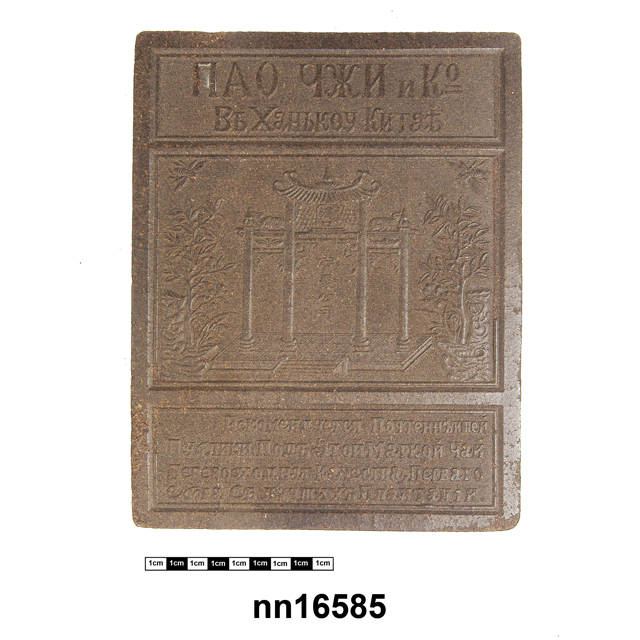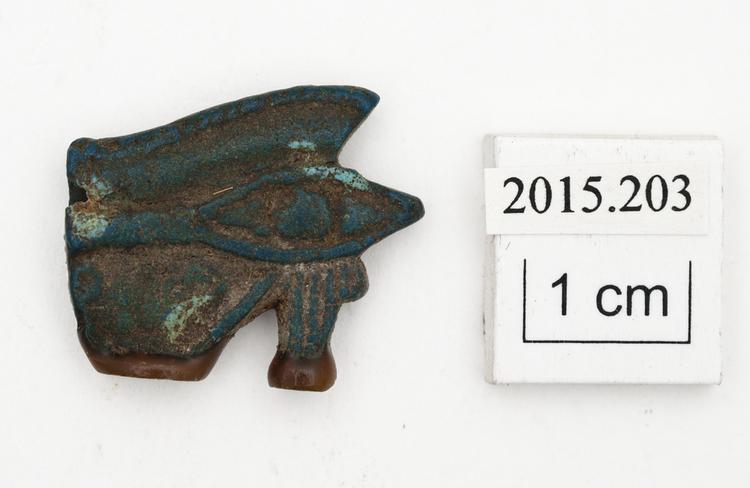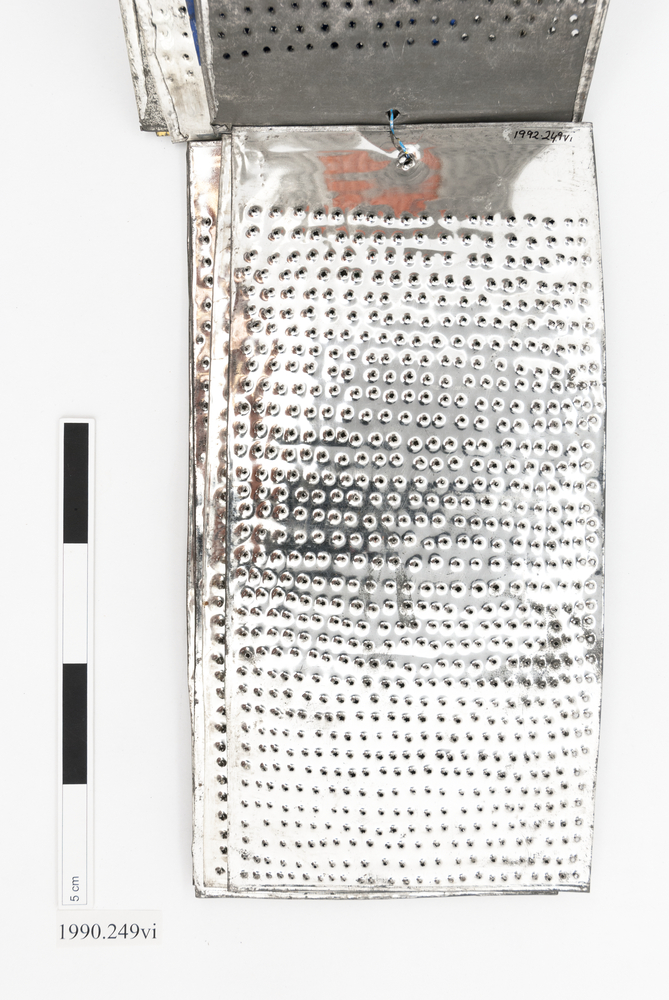

Rectangular brick of compressed, powdered tea. The brick is stamped on the obverse with a traditional Chinese memorial archway or paifang, flanked by trees and bees in relief and with Russian inscriptions above and below. The reverse is divided into 16 segments, with each segment stamped with Russian inscriptions within lobed panels. The maker's label was stamped in a Chinese inscription in the middle of the archway and reads 'Bao Ju Company in Hankou city'. The brick was made possibly for the Russian and Siberian markets. Tea bricks of this type were traded and used as currency in the early 20th century throughout China, Tibet, Mongolia, Russia and Central Asia.






